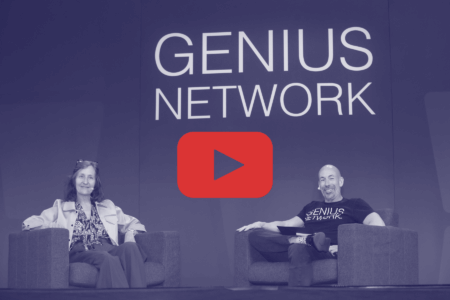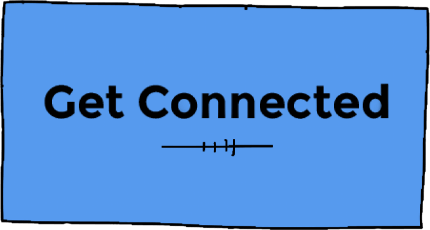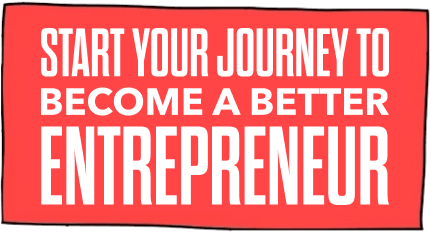
Dopamine Nation: Balancing Pleasure and Pain in the Modern World with Dr. Anna Lembke and Joe Polish #208
Episode Summary
In this episode Joe Polish and Dr. Anna Lembke explore the neuroscience of addiction and the role of dopamine in shaping our behavior. They discuss how modern life affects our pleasure-pain balance and explore effective strategies like dopamine fasting for recovery. Gain unique insights from Dr. Lembke’s personal journey and its impact on her understanding of mental health.
Here’s a glance at what you’ll discover from Dr. Anna Lembke in this episode:
- Unlock Neuroscience Secrets: Delve into the neuroscience of addiction and discover how the brain’s reward circuit and dopamine play pivotal roles in our behavior and choices.
- The Dopamine-Movement Connection: Learn how dopamine, essential for movement, reward, and pleasure, is impacted by our modern sedentary lifestyle, leading to various addictions.
- Pleasure-Pain Balance Explained: Understand the brain’s teeter-totter mechanism of processing pleasure and pain and its profound implications for addiction and mental health.
- Neuroscience of Reward and Craving: Discover how repeated exposure to addictive substances alters our brain’s dopamine levels, leading to the craving cycle and addiction.
- Neuroplasticity and Recovery: Explore the concept of neuroplasticity and how abstaining from addictive behaviors can help restore the brain’s balance and overcome addiction.
- Understanding the ‘Dopamine Fast’: Learn about the dopamine fast approach for treating addiction and how it can lead to improved mental health and overall well-being.
- Addiction’s Broad Spectrum: Gain insights into the wide range of addictions affecting modern society, from traditional substances to digital media and interpersonal relationships.
- The Impact of Modern Overabundance: Explore how today’s world of overabundance and instant gratification may be contributing to a widespread mental health crisis.
- Suicide Trends and Mental Health: The alarming trends in suicide rates, especially in wealthier nations, and their potential link to a dopamine deficit state.
- Digital Media Addiction and Its Consequences: Dive into the alarming statistics of digital media consumption and its addictive nature, highlighting the need for moderation and self-control.
- Practical Strategies for Addiction Recovery: Discover various strategies to combat addiction, from self-binding techniques to leveraging supportive communities and appropriate medication.
- Hormesis in Addiction Recovery: Learn about the role of hormesis – exposure to mild stressors – in building resilience and aiding addiction recovery.
- Community and Governance Roles in Addiction: Understand the importance of community and governance in creating supportive environments for addiction prevention and recovery.
- Defining Addiction in Today’s World: Discover what addiction truly means in our modern society, as Anna Lembke explains the continued compulsive use of substances or behaviors despite harm to oneself or others.
- Entrepreneurs and the Addiction Threshold: Learn how to recognize when a healthy drive and ambition in entrepreneurship is tipping into addictive behavior, and the key signs to watch for.
- Communicating Complex Science to a Broad Audience: Understand how Anna Lembke’s approach to explaining the complexities of addiction science has evolved, aiming to make it accessible and relatable to a wider audience.
- Personal Impact of Research on Dopamine Nation: Delve into how the research and writing of ‘Dopamine Nation’ have influenced Anna Lembke’s personal life and habits, offering insights into the profound effects of understanding dopamine’s role in our lives.
If you’d like to join world-renowned Entrepreneurs at the next Genius Network Event or want to learn more about Genius Network, go to www.GeniusNetwork.com.
WHAT'S IN IT FOR THEM?
Get the first chapter for FREE and a limited-time viewing of "Connected: The Joe Polish Story"
Show Notes
Neuroscience of Addiction:
- Reward Circuit: The brain’s reward circuit involves the prefrontal cortex (important for planning, delayed gratification, and storytelling) and deep limbic structures (nucleus accumbens and ventral tegmental area) rich in dopamine neurons.
- Dopamine’s Role: Dopamine is a crucial neurotransmitter for pleasure, reward, and motivation. It bridges the synapse between neurons, allowing fine-tuning of electrical circuits.
- Addiction Mechanisms: Addiction arises from problems in the prefrontal cortex (brakes) or limbic structures (accelerator). Different substances and behaviors increase dopamine levels to varying degrees, with amphetamines causing the highest increase.
Pleasure-Pain Balance:
- Homeostasis: The brain strives for balance (homeostasis) between pleasure and pain. Deviations are countered by neuroadaptation, where the brain temporarily tilts towards pain to restore balance.
- Addiction Cycle: Repeated use of addictive substances or behaviors leads to a shift in the brain’s set point, requiring more of the substance to feel normal and resulting in withdrawal symptoms when not using.
The Plenty Paradox:
- Evolutionary Mismatch: The pleasure-pain balance is suited for a world of scarcity, driving us to seek rewards for survival. In today’s world of abundance, this mechanism becomes a liability, leading to overconsumption and addiction.
- Drugification: Modern life has made various aspects of life more potent and addictive, from food and technology to relationships and work.
Impact of Dopamine on Movement:
- Movement and Reward: Dopamine is essential for movement, with even primitive organisms releasing dopamine to move toward food. In modern life, the lack of physical effort to obtain rewards contributes to addiction.
Addiction’s Effects on the Brain:
- Neuroplasticity: With sustained abstinence, the brain can eventually restore balance, but this process varies among individuals. Severe addiction can result in a chronic dopamine deficit state.
- Permanent Changes: Even after recovery, the brain retains a latent echo of addiction, making relapse possible with re-exposure to the drug of choice.
Cue-Induced Learning:
- Anticipation and Craving: Learning to associate cues with rewards leads to dopamine release upon seeing the cue, followed by a deficit state if the reward is not received, driving the craving cycle.
Childhood and Adolescence:
- Critical Period: The brain undergoes significant changes from age 5 to 25, pruning unused neurons and strengthening frequently used ones. This period is crucial for developing healthy coping strategies.
Mental Health Crisis:
- Dopamine Deficit State: The host hypothesizes that widespread dopamine deficits due to modern overabundance contribute to rising rates of depression and anxiety.
Practical Takeaways:
- Understanding Addiction: Recognizing the role of the brain’s reward circuit and dopamine in addiction can help in developing better strategies for treatment and prevention.
- Balancing Pleasure and Pain: Awareness of the pleasure-pain balance can aid in making healthier choices and avoiding overconsumption.
- Addressing the Plenty Paradox: Identifying and mitigating the impact of modern life’s abundance on mental health is crucial for overall well-being.
The Paradox of Prosperity and Despair:
- Despite increased wealth, people in high-income countries experience higher rates of suicide compared to those in low-income countries.
- The phenomenon of “deaths of despair” highlights the increased mortality rates due to alcohol-related liver disease, drug overdose, and suicide, particularly among white Americans without high school diplomas.
- The easy access to cheap pleasures and lack of rewarding sources of dopamine contribute to the mental health crises in affluent societies.
Digital Media Consumption:
- In 2021, adults in the US spent an average of 8 hours and 5 minutes daily on digital media for entertainment, not work.
- Digital media acts as a powerful drug, stimulating the same reward pathways in the brain as addictive substances.
- The rise in social media, video games, and indiscriminate internet use is contributing to increased addiction rates.
Clinical Approaches to Addiction:
- Traditional approaches to treating anxiety, depression, and inattention involved prescribing antidepressants or recommending psychotherapy.
- Modern approaches focus on screening for the consumption of highly reinforcing drugs and behaviors, such as caffeine, alcohol, cannabis, pornography, and social media.
- A recommended intervention is the “dopamine fast,” where patients abstain from their drug of choice for four weeks to reset the brain’s reward pathways.
Dopamine Fast:
- Abstaining from the drug of choice for four weeks helps restore homeostasis and balance in the brain.
- Patients often experience less depression, anxiety, and improved sleep after the fast.
- The first ten to fourteen days of withdrawal are particularly challenging, but necessary for long-term improvement.
Self-Binding Strategies:
- Willpower alone is insufficient for overcoming addiction; creating barriers between oneself and the drug of choice is essential.
- Self-binding strategies include physical barriers (e.g., removing addictive substances from the environment) and time-based strategies (e.g., scheduling specific times for activities).
- Social support and engaging in mutual help communities significantly increase the likelihood of success.
Pharmaceutical Interventions:
- Medications like naltrexone and Wogovi (Ozempic) are being used to treat various addictions, including alcohol use disorder and binge eating.
- These medications help reduce cravings and the compulsive use of addictive substances.
The Pleasure-Pain Balance:
- Pressing on the pleasure side of the brain’s balance leads to pain, while pressing on the pain side can lead to pleasure.
- Activities like exercise, cold water baths, fasting, meditation, and prayer can increase dopamine levels in a healthy way.
- Sustained and effortful engagement in these activities helps maintain a balanced dopamine level without the crash associated with addictive substances.
Community and Governance:
- Addressing addiction requires collective efforts at individual, community, and governmental levels.
- Schools should implement policies to minimize distractions from digital devices, allowing students to focus on learning.
- Legislation is needed to protect children from addictive digital media and to hold corporations accountable for their role in the addiction crisis.
Personal Journey Through Addiction:
- The speaker reflects on their own battle with addiction, beginning with substance withdrawal at 18.
- They discuss the challenging experience of living in a mobile home and enduring physical and mental pain during recovery.
- Emphasis on the deep empathy developed for those struggling with addiction, including experiences with both drug and sexual addiction.
Understanding and Overcoming Shame:
- Shame as a Double-Edged Sword
- Shame can be both a motivator for change and an obstacle that drives further addiction and isolation.
- Deshaming Techniques
- Learning about the neuroscience of addiction helps in understanding the brain’s hijacked state.
- Dopamine fasting can lead to moments of clarity, where individuals realize the true impact of their addictive behaviors.
Approaches to Addiction Recovery:
- Biopsychosocial Model Recovery involves biological (understanding addiction mechanisms), psychological (therapy), and social (contextual factors) interventions.
- Pleasure vs. Pain Balance
- High-functioning individuals might press extremes on both sides (e.g., intense work and excessive partying) leading to burnout.
- Recommendations for balancing work and pleasure to avoid triggering cortisol and adrenaline responses.
Advice for Entrepreneurs:
- Recognizing Burnout
- The importance of taking breaks and balancing work with self-care to prevent burnout.
- Dopamine Fasting
- Steps to start a dopamine fast:
- Preparation: Track usage and reasons for addictive behaviors.
- Setting a Quit Date: Aim for at least four weeks to reset reward pathways.
- Post-Fast Reflection: Evaluate the pros and cons and make a plan for future use.
- Moderation: Strive for a balance without daily or binge use of substances.
- Steps to start a dopamine fast:
Impact of Modern Technology:
- Discussion on the role of AI and its potential influence on dopamine systems.
- Emphasis on relationships and human connection as central to a fulfilling life, beyond technological advancements.
Personal Insights:
- Radical Honesty
- The practice of truth-telling and its role in overcoming addiction and improving personal relationships.
- Life Lessons
- Learning from patients and applying these lessons to personal habits and interactions.
Resources
- Dopamine Nation: Finding Balance in the Age of Indulgence by Dr. Anna Lembke
- GeniusNetwork.com
- AnnaLembke.com
- GeniusRecovery.org






